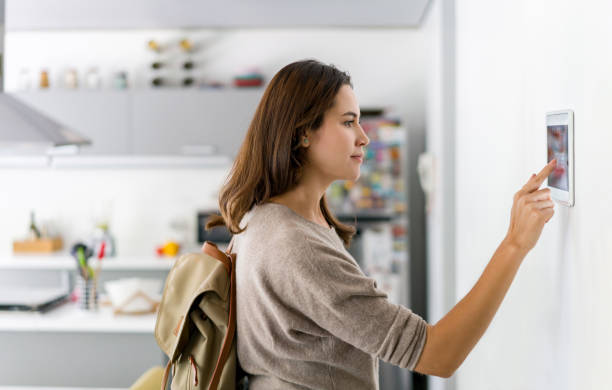Setting up a home automation system can seem like a daunting task, but with the right guidance, it can be a smooth and rewarding process. This article will walk you through the essential steps required to integrate smart devices into your home, so you can control everything from lighting to security with ease.
Understanding Home Automation

Home automation involves incorporating smart devices into your living space to control various aspects of your home using a centralized system. These devices can include lighting systems, thermostats, home security cameras, and even kitchen appliances. By connecting these devices to a central hub, you can control them remotely through a smartphone app or voice commands, creating a more convenient and efficient living environment.
Choosing Your Home Automation Hub
The first step in setting up a home automation system is selecting a hub that will act as the central command center. Popular choices include Amazon Echo, Google Home, and Apple HomePod. Each of these provides a distinct set of features and compatibility with different smart devices, so it’s important to evaluate which hub best meets your needs. Make sure to consider factors like voice assistant compatibility, supported devices, and ease of use when making your decision.
Amazon Echo
Amazon Echo, powered by Alexa, is a versatile and user-friendly option that supports a wide range of smart home devices. With its vast ecosystem, you can effortlessly connect lights, thermostats, security cameras, and more. Additionally, Echo integrates seamlessly with other Amazon services, making it a great choice for those already invested in the Amazon ecosystem.
Selecting Smart Devices
Once you have your hub in place, the next step is to choose the smart devices you want to incorporate into your home. This could range from smart lights and thermostats to smart locks and cameras. It’s important to ensure that the devices you choose are compatible with your selected hub. Here’s a list of common smart devices to consider:
- Smart Lighting: Philips Hue, LIFX
- Smart Thermostats: Nest, Ecobee
- Smart Security: Ring, Arlo
- Smart Locks: August, Schlage
- Smart Plugs: TP-Link, Wemo
Start by focusing on the areas of your home that will benefit most from automation, and gradually expand as you become more comfortable with the technology.
Setting Up and Connecting Devices
After selecting your devices, the next step is to set them up and connect them to your hub. Follow the manufacturer’s instructions for each device to ensure proper installation. Typically, this involves downloading the device’s app, connecting it to your home Wi-Fi network, and linking it to your hub. Many devices will offer step-by-step guides within their apps, making the process straightforward.
Once all your devices are connected to the hub, you can begin creating routines and automation sequences. For example, you could set your lights to turn on automatically when you arrive home, or schedule your thermostat to adjust the temperature based on your daily schedule.
Optimizing and Maintaining Your System
With your home automation system up and running, it’s important to regularly check and optimize its performance. This includes updating device firmware, adjusting settings to improve efficiency, and ensuring all devices remain connected. Regular maintenance will help prevent issues and ensure your system continues to operate smoothly.
Take advantage of your hub’s capabilities by exploring additional features and integrations. You might find new ways to simplify your daily routines and enhance your home’s comfort and security. Always keep an eye out for new smart devices and services that can further enrich your home automation experience.
Conclusion
Setting up a home automation system can transform your living space into a more convenient, efficient, and secure environment. By understanding the basics, choosing the right hub, selecting compatible smart devices, and following proper setup procedures, you can create a cohesive and functional smart home. Regular maintenance and optimization will ensure your system remains effective, allowing you to enjoy the full benefits of home automation.
FAQs
1. What is a home automation system?
A home automation system integrates smart devices into your home, allowing you to control various aspects, such as lighting, security, and climate, through a central hub.
2. Which home automation hub should I choose?
Your choice of hub depends on your specific needs and device compatibility. Popular options include Amazon Echo (Alexa), Google Home, and Apple HomePod.
3. Can I automate my existing appliances?
Yes, you can automate many existing appliances by using smart plugs or adapters that enable them to connect to your home automation system.
4. Is it difficult to set up a home automation system?
Setting up a home automation system can be straightforward with the right guidance. Follow the manufacturer’s instructions and take your time to ensure proper installation and configuration.
5. How can I ensure my home automation system remains secure?
To keep your home automation system secure, regularly update device firmware, use strong passwords, and maintain secure network practices, such as enabling WPA3 encryption on your Wi-Fi router.
